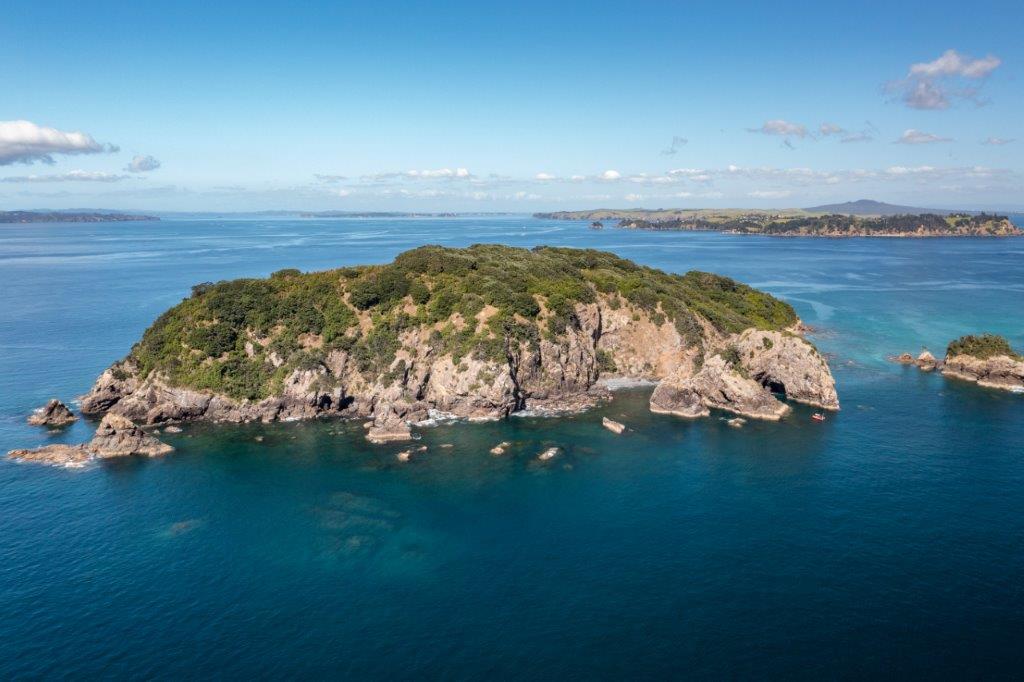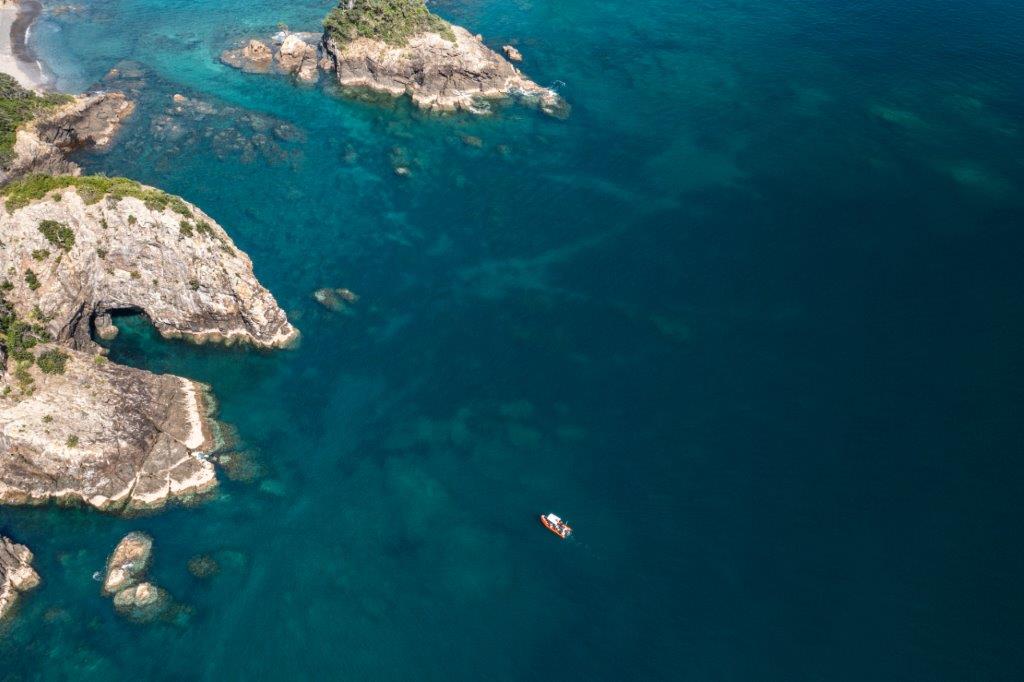Kia ora koutou! It has been rather a long time between newsletters, so we thought…
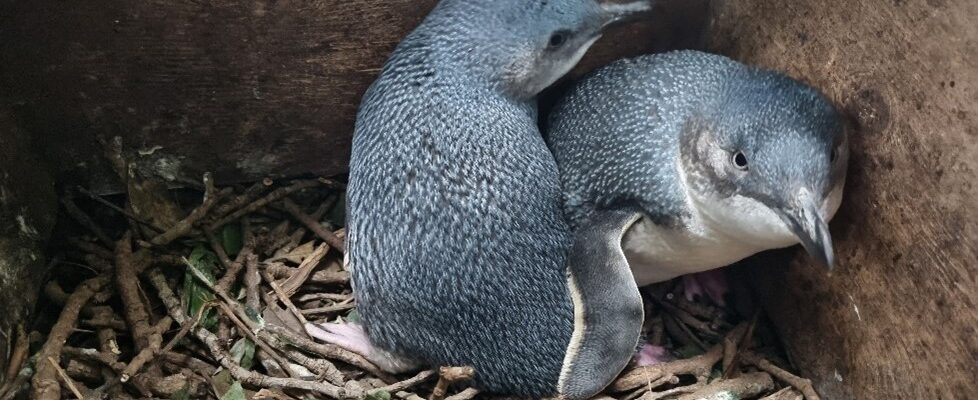
Another seabird season has started!
The Noises hold a very special interest for seabird lovers. Being home to at least 10 seabird species, it holds the impressive title of most diverse seabird collection in the inner Hauraki Gulf. This small chain of islands is pest free and shows outstanding coverage of native plants, which makes it an ideal habitat for thriving seabird communities. The largest of the Noises islands is Ōtata, a 20ha area covered in naturally regenerated forest, after an accidental fire destroyed much of the island in the 1920’s. Intense weeding by the Neureuter family over the last decades resulted in an impressive environment, home to petrel, shearwater and penguin populations, among other incredible biodiversity. Unfortunately, we still know very little about the populations inhabiting this island, but we want to fix this knowledge gap.
In an effort to learn more about our Ōtata resident seabirds, Auckland Council has established a Seabird Monitoring and Research Programme in collaboration with The Noises Family Trust and Tāmaki Paenga Hira Auckland War Memorial Museum. This long-term monitoring effort takes an annual look at population trends and health, such as how successfully they are breeding each year. Monitoring populations on the island is especially important as we anticipate a marine protection area to be created around The Noises in 2024. Having solid information on these colonies before the removal of threats coming from the ocean can give us a better idea on how these species respond to conservation actions and help highlight the importance of marine protection for habitat restoration in the Gulf islands.
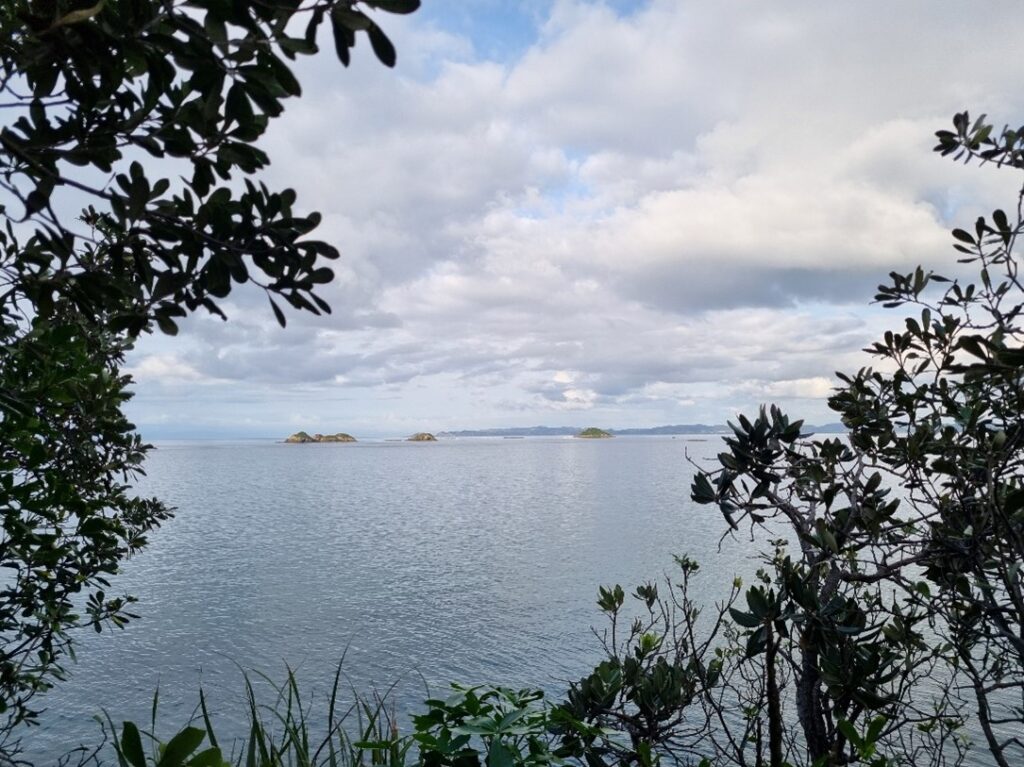
In August 2023, Dr. Gaia Dell’Ariccia and myself, Maíra Fessardi, from the Seabird Team at Auckland Council headed to Ōtata to survey seabird species that breed during winter. We spent three days and two nights on the island, working day and night to take a good look at these birds. Seabirds such as petrels and little penguins nest underground, in what is called a burrow. Grey-faced petrel come to land after spending months traversing the ocean, usually returning to their natal colony to start the breeding season. Males choose a suitable area and dig a tunnel with their powerful legs and beaks. This tunnel ends in a comfortable and warm chamber for nesting, where the female lays one single egg, and then both parents take turns incubating the egg and raising their chick. Every year, males return early in the breeding season to the same burrow, to do some house maintenance, reunite with their life-long partner or attract a new one, and to breed. During this August trip, we surveyed 80 study burrows that were established for long-term monitoring two years ago. We found 40 burrows occupied by grey-faced petrels, and 17 by little penguin.
The monitoring routine for a lucky seabird scientist involves a lot of one-on-one time with the birds. After finding occupied nests, we gently remove grey-faced petrels from the burrows and place them in a cotton breathable bird bag. The dark and warm environment helps to ease their stress and allows us to handle them swiftly. Birds are banded – or their band number recorded if they were already banded – with unique bands issued by the Department of Conservation. This allows us to individually identify birds and follow them through the years. Feather and blood samples are also taken for laboratory analyses, as this information gives us better clues on their health condition. Finally, we check their burrows for the presence of an egg to learn whether these birds are breeding and follow their progress across the breeding season. After the handling process is done and all information is noted, birds are released back in the burrows where they promptly resume to incubate their egg.
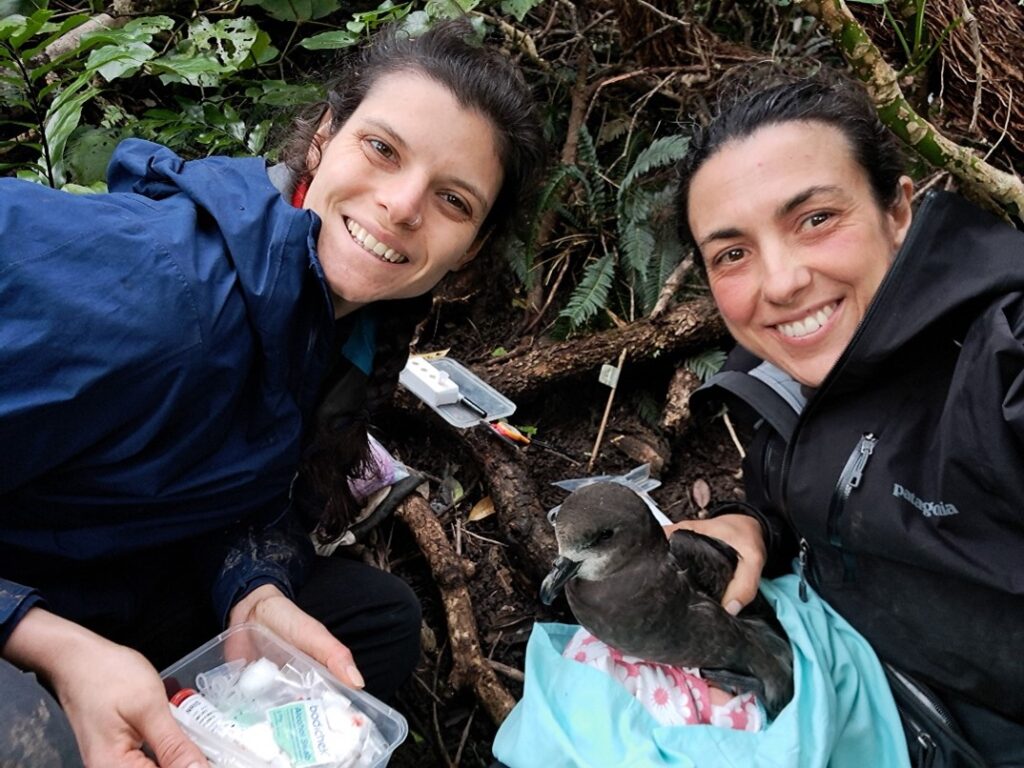
Feather and blood samples can be used as useful monitoring tools. A big part of our Seabird Programme is to better understand the threats they are facing, and what is possibly causing their declines, so to inform restoration decisions. With that in mind, we started to monitor birds for contamination with heavy metals, as they can be identified and quantified from feathers and blood. Using this information, we can identify populations with worrying levels of heavy metal ingestion, as high levels are toxic to birds, and potentially identify polluted areas of the ocean where we know these birds hunt for food. Feathers can also be checked for their quality. Like having strong hair in healthy humans, having healthy feathers with good colouration can give us a hint on how well a bird is doing, and can help us assess population health.
Little penguins are not banded as petrels, so we do not remove them from their nests. We inspect the burrows for egg presence to assess breeding, but their e help of a burrowscope: a small camera attached to a long and flexible hose. This allows us to manoeuvre the camera in the twists and turns of the burrow, to reach the chamber and have a good peek of what is happening in their lives.

This year, we also installed small temperature loggers inside some of the burrows and outside to measure the environment temperature; this will investigate how temperature varies inside the burrows when compared to the environment temperature outside, and how, in a scenario of climate change, this may affect breeding success of these birds.
But seabirds are nocturnal creatures, which means that the real activity happens after sunset. So, after a good rest and warm dinner, we were out again for a couple of hours of night work, when we could catch birds coming in and out of their burrows and study more about the population numbers.
All this information we are gathering is incredibly important to paint a better picture of seabird communities living on the Noises. This is the third year of monitoring by the Seabird Team in Ōtata, and yet another small step towards our wider goal to better understand these species and how we can help them to thrive. Seabirds live long and dynamic lives and require long-term monitoring to confidently understand their population dynamics. We are all excited to keep exploring this beautiful island and discovering the secrets of seabird lives living underground.

